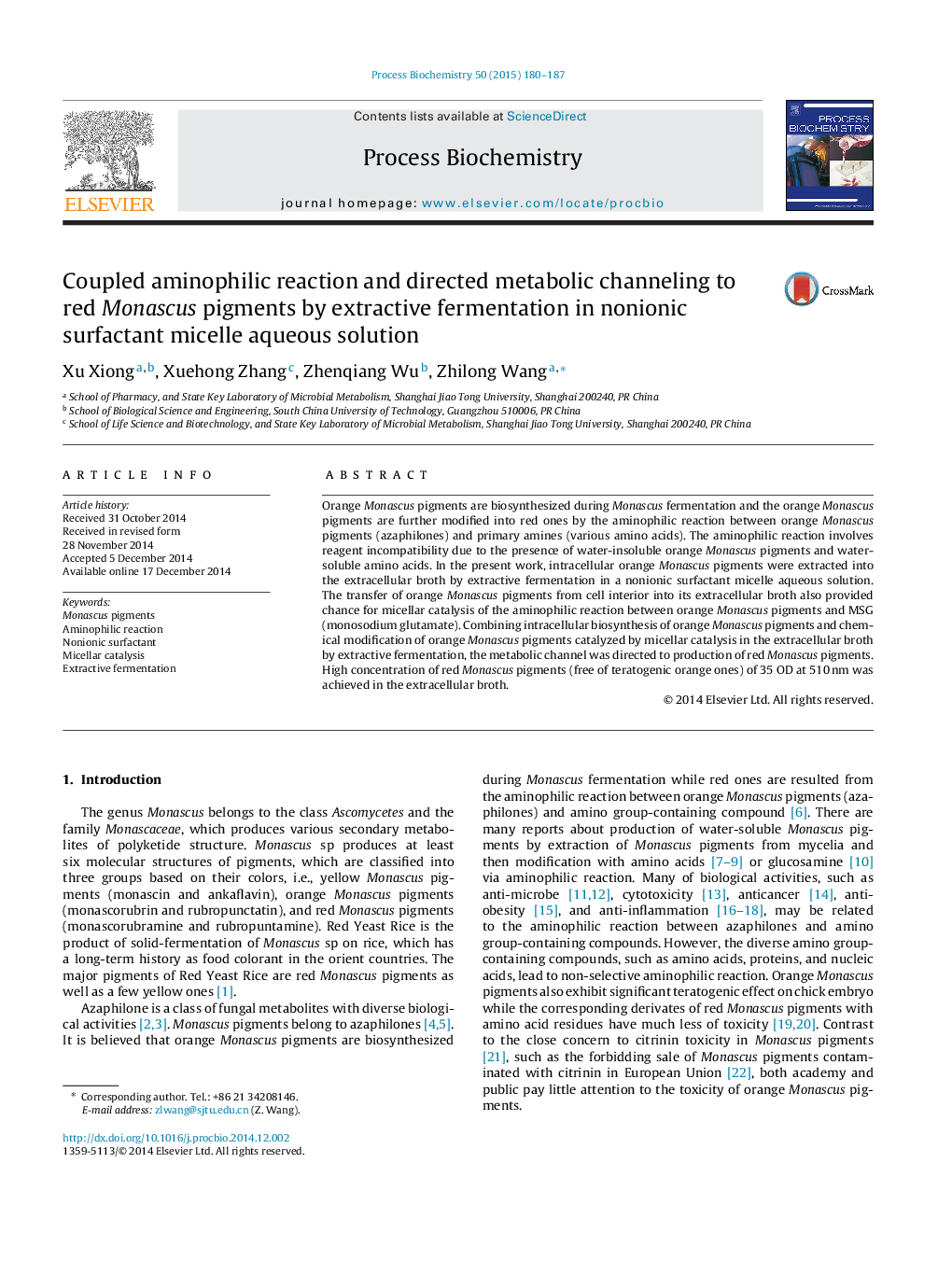| Article ID | Journal | Published Year | Pages | File Type |
|---|---|---|---|---|
| 34389 | Process Biochemistry | 2015 | 8 Pages |
•Extractive fermentation in nonionic surfactant micelle aqueous solution to secrete intracellular pigments.•Micellar catalysis of aminophilic reaction between orange Monascus pigments and MSG.•Directed metabolic channeling to synthesize red Monascus pigments.•Production of high concentration of red Monascus pigments.
Orange Monascus pigments are biosynthesized during Monascus fermentation and the orange Monascus pigments are further modified into red ones by the aminophilic reaction between orange Monascus pigments (azaphilones) and primary amines (various amino acids). The aminophilic reaction involves reagent incompatibility due to the presence of water-insoluble orange Monascus pigments and water-soluble amino acids. In the present work, intracellular orange Monascus pigments were extracted into the extracellular broth by extractive fermentation in a nonionic surfactant micelle aqueous solution. The transfer of orange Monascus pigments from cell interior into its extracellular broth also provided chance for micellar catalysis of the aminophilic reaction between orange Monascus pigments and MSG (monosodium glutamate). Combining intracellular biosynthesis of orange Monascus pigments and chemical modification of orange Monascus pigments catalyzed by micellar catalysis in the extracellular broth by extractive fermentation, the metabolic channel was directed to production of red Monascus pigments. High concentration of red Monascus pigments (free of teratogenic orange ones) of 35 OD at 510 nm was achieved in the extracellular broth.
